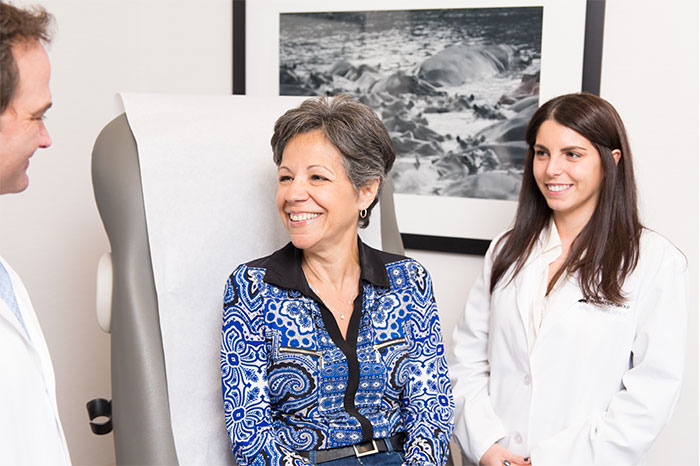Thousands of Westchester residents struggle every single day with their weight. No matter how they try, either the weight won’t come off, or when it does, it soon returns. They face the prospect of diminishing health and serious conditions like high blood pressure, arthritis and type 2 diabetes. If this accurately describes you, you might want to consider the adjustable gastric band as an appropriate measure to get your weight under control and achieve a healthier lifestyle.
Westchester Gastric Band

Adjustable Gastric Banding - The Lap-Band Procedure
About This Procedure
FAQs
New York Bariatric Group
What Is Gastric Band Surgery?
Sometimes referred to as the lap band or gastric banding, adjustable gastric band surgery is done laparoscopically through 5 very small incisions in the mid-section. The surgeon creates a small pouch by tightening an inflatable silicone band around the top portion of the stomach. The band is connected to a small port attached to the abdominal wall, just beneath the skin. During future office visits, the band can easily be cinched tighter or loosened by adding or removing some of the solutions.
How Does It Work?
The small pouch at the top of the stomach will greatly limit the amount of food you can consume. When the pouch fills up, it sends a signal to your brain telling it you are full. You will no longer feel hungry and will have eaten far less.
What are the Benefits?
Although results vary from one patient to the next, you can anticipate losing 50 to 60% of your excess weight within 3 years following the procedure. Your overall well-being should improve because of the weight loss. You will be less at risk for health conditions like hypertension, heart disease and certain kinds of cancer.
Because it is less invasive than other bariatric procedures, the recovery time following gastric band surgery is much shorter. As an outpatient procedure, you can expect to return home the day after your surgery. You should also be able to return to work after approximately 5 days (as long as your work does not involve strenuous exertion or heavy lifting) and resume all of your normal activities within 1 to 2 weeks.
Another of the great benefits of the gastric band is it is the only bariatric procedure that is easily adjustable at any of your follow-up appointments. Your doctor can assess and respond to your body’s progress as it heals and becomes accustomed to its new digestive process. The gastric band is also completely reversible.
Other bariatric procedures can alter your body’s ability to absorb the nutrients contained in foods leading to vitamin and mineral deficiencies in some patients. Since this is not the case with the gastric band, this risk does not apply.
What are the Risks?
It is true that the gastric band is comparatively lower risk than other bariatric procedures because it is less invasive. However, it’s important to note that no surgery involving general anesthesia is completely risk-free. Some of the most serious complications arising from gastric band surgery can include erosion or slippage of the band and deep-vein thrombosis or pulmonary embolus.
You may also experience nausea or vomiting because of eating too much or too quickly, heartburn or gallstones. In time, some patients exhibit muscle loss as the body begins to burn muscle tissue in an effort to conserve fat.
You may also find you have excess skin, which is common in the two years following significant and rapid weight loss. If this becomes the case, you will be evaluated by a plastic surgeon to determine is a surgical solution is in order.
Is There a Follow-Up Plan?
It is important to think of the gastric band as a tool to help you lose weight and regain health. Your actions in the weeks, months and years that follow the surgery will determine how well you use the tool. The surgeons and staff at the Westchester office of New York Bariatric Group will be a vital resource for you in achieving your desired results.
We will provide you with dietary guidelines for every phase following the procedure. Initially, you will only be able to consume soft or pureed foods or liquids. After 4 weeks, you will be able to reintroduce solid foods, however your portion sizes will need to be much smaller. It will be very important that you chew your food very thoroughly, until it is almost liquid, before swallowing it. You will need to make sure you get lots of protein in your food to help minimize loss of muscle mass.
You will need to walk as much as possible immediately following the surgery. This, along with the blood thinners we will administer, helps to prevent blood clots from forming in your legs. As you recover, we will encourage you to adopt a good exercise program as part of your new healthy lifestyle. Regular exercise will help you with mobility, benefit virtually every organ in your body and help to curb your appetite
Start your weight loss journey today! At the New York Bariatric Group we combine long-term experience, top-tier patient care, and expert guidance to guide you through the journey to successful weight loss.
